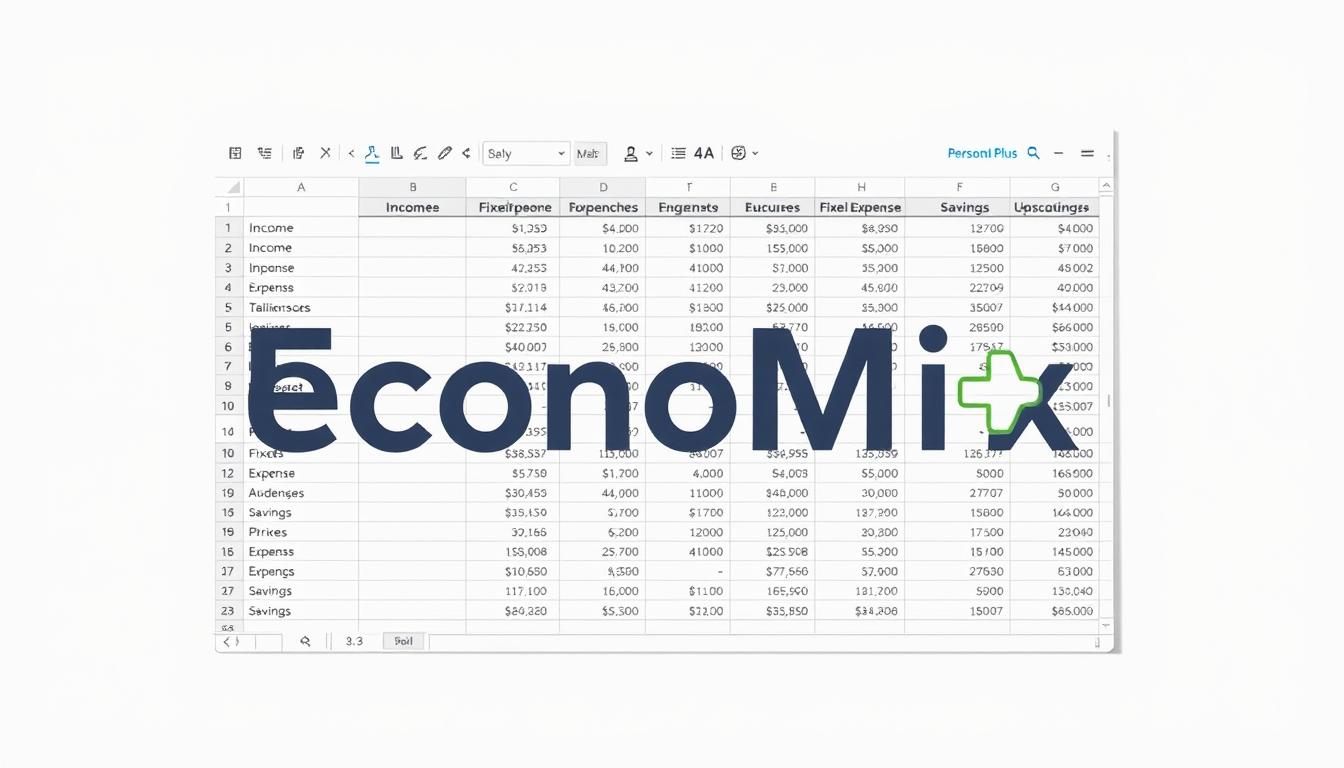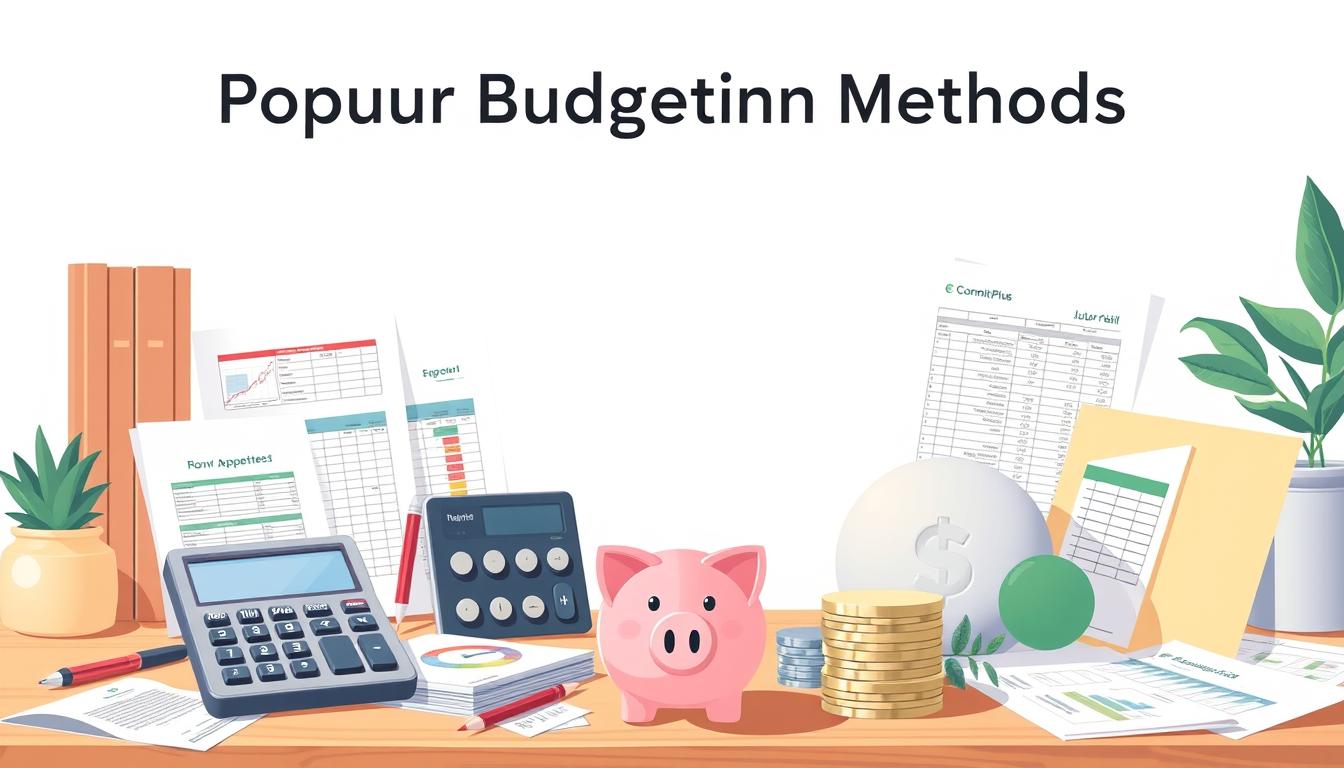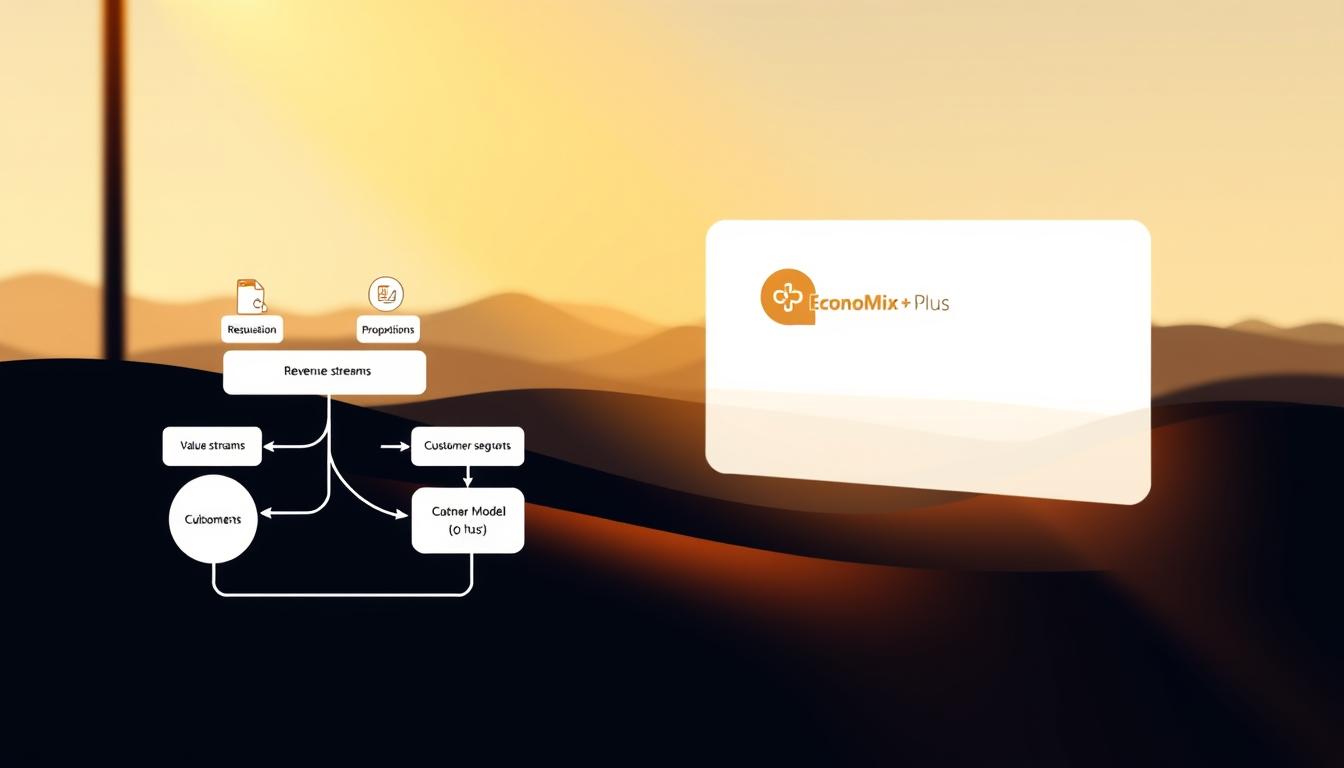Effective financial management is crucial in today’s fast-paced world. Managing your money wisely is key to achieving your financial goals. Whether you’re saving for a home, planning a vacation, or preparing for retirement, a well-crafted budget serves as your roadmap to financial stability and success.
Creating a personal budget that accounts for both present needs and future aspirations can seem daunting, but it’s a strategic approach to gaining control over your finances. By understanding how to create an effective budget, you can reduce financial stress and pave the way for a brighter financial future.
Key Takeaways
- Understand the importance of budgeting for financial stability.
- Learn how to create a budget that accounts for future needs.
- Discover strategies for balancing immediate financial needs with long-term planning.
- Gain control over your finances and reduce financial stress.
- Create a personalized budget that helps achieve financial goals.
Understanding the Importance of Personal Budgeting
Effective financial management starts with a clear understanding of personal budgeting. By creating a budget, you gain a comprehensive view of your financial situation, enabling you to make informed decisions about your money.
Financial Awareness and Control
A well-structured budget provides financial awareness by detailing your income and expenses, helping you understand where your money is going. This awareness allows you to control your finances more effectively, making intentional decisions rather than wondering where your money went.
The Psychological Benefits of Budgeting
Budgeting also has significant psychological benefits. By having a plan, you can reduce financial anxiety and feel more secure. Achieving small financial milestones boosts your confidence and motivates you to continue your financial journey. This empowerment leads to reduced stress and increased financial confidence.
| Benefits of Budgeting | Description |
|---|---|
| Financial Awareness | Clear picture of income and expenses |
| Control Finances | Making intentional financial decisions |
| Psychological Benefits | Reduced financial anxiety and increased confidence |
Assessing Your Current Financial Situation
The foundation of a successful budget lies in accurately assessing your current financial situation. To do this, you need to understand your income and expenses. This involves gathering all financial documents, including pay stubs, bank statements, and bills.
Calculating Your Total Income
To calculate your total income, start by identifying all sources of revenue. This includes your primary salary, any side hustles, and other regular payments. Use your net income (after taxes and deductions) for an accurate figure. If your income varies, consider averaging your earnings over several months.
Identifying All Sources of Revenue
Identifying all sources of income is crucial. This includes your salary, freelance work, rental income, child support, or government benefits. Make a list of these sources and their corresponding amounts to get a clear picture of your financial inflows.
| Source of Income | Monthly Amount |
|---|---|
| Salary | $4,000 |
| Freelance Work | $800 |
| Rental Income | $1,200 |
| Total Income | $6,000 |
Tracking and Categorizing Your Expenses
Tracking your expenses is the foundation upon which a successful budget is built. To effectively manage your finances, you need to understand where your money is going. Start by categorizing your expenses into two main groups: fixed and variable.
Fixed Expenses vs. Variable Expenses
Fixed expenses remain constant each month, such as rent or mortgage payments, insurance premiums, loan payments, and utilities. On the other hand, variable expenses fluctuate monthly and can be adjusted, including groceries, dining out, entertainment, clothing, and transportation. Understanding the difference between these two categories will help you identify areas where you can make adjustments to your budget.
Tools and Methods for Expense Tracking
To track your expenses effectively, you can use various tools and methods. Utilize budgeting apps or spreadsheets to keep track of your spending. Review your bank statements to identify recurring expenses and spending patterns. Be honest and record every expense, no matter how small, to gain a complete understanding of your financial habits.
Setting Clear Financial Goals
Setting financial goals gives you direction and purpose in your budgeting efforts. By establishing clear objectives, you can create a roadmap for your financial decisions, ensuring that you’re working towards what’s truly important to you.
Short-Term Goals
Short-term goals are those you aim to achieve within the next 1-12 months. Examples include building an emergency fund, saving for a vacation, or paying off a credit card. To make these goals effective, be specific, such as saving $1,000 for a vacation by the end of the year.
Mid-Term Goals
Mid-term goals extend beyond a year but are achieved within 1-5 years. These might include saving for a down payment on a house, financing a car, or covering education expenses. For instance, you might aim to save $10,000 for a home down payment over the next three years.
Long-Term Goals
Long-term goals are those that take more than 5 years to achieve, such as retirement planning, saving for your children’s education, or accumulating wealth. An example would be contributing to a retirement fund to ensure a comfortable post-work life.
To make your financial goals effective, consider the SMART criteria: make them Specific, Measurable, Achievable, Relevant, and Time-bound. Regularly reviewing and adjusting your goals is also crucial as your financial situation and priorities evolve over time.

- Categorize your goals into short-term, mid-term, and long-term objectives to create a balanced financial plan.
- Use the SMART criteria to define your goals clearly and make them actionable.
- Regularly review your progress and adjust your goals as necessary to stay on track.
How to Build a Personal Budget That Accounts for Your Future Needs
To achieve financial security, building a budget that considers your future goals is essential. Now that you have tracked your income and expenses, set your financial goals, and chosen a budgeting method, it’s time to create your budget.
The Step-by-Step Budget Creation Process
Follow these steps to create your budget:
- List your income sources for the month.
- Categorize your fixed and variable expenses.
- Allocate funds using your chosen budgeting method.
- Review and adjust to ensure expenses do not exceed income.
Allocating Funds for Future Planning
To plan for the future, allocate funds toward specific goals by setting up dedicated savings categories. Automate transfers to make consistent progress. This approach helps balance immediate expenses with long-term financial planning.

Popular Budgeting Methods to Consider
Budgeting is a personal and flexible process, and there are multiple methods you can use to organize your finances. Choosing the right budgeting method can make a significant difference in your financial stability.
The 50/30/20 Rule Approach
The 50/30/20 rule is a simple yet effective budgeting approach. It allocates 50% of your income towards essential expenses or ‘needs,’ 30% towards discretionary spending or ‘wants,’ and 20% towards savings and debt repayment. This method provides a straightforward framework for balancing your current expenses with future financial planning.
Zero-Based Budgeting
Zero-based budgeting is a meticulous method where every dollar of your income is assigned a specific purpose. This approach ensures that you have complete control over your money and helps eliminate unnecessary expenses. At the end of the month, your budget should “zero out,” indicating that every dollar has been allocated.
The Envelope System
The envelope system is a tangible, cash-based budgeting approach. It involves dividing your expenses into categories and placing the corresponding budgeted cash into labeled envelopes. Once the cash in an envelope is spent, you cannot spend more in that category until the next budgeting period. This method helps create clear spending boundaries.

Building an Emergency Fund
A well-stocked emergency fund is the cornerstone of a robust financial plan. It serves as a buffer against unexpected expenses and financial shocks, providing peace of mind and financial security.
Determining Your Emergency Fund Size
To determine the appropriate size for your emergency fund, consider factors such as job stability, family size, and fixed monthly expenses. Aim to save three to six months of expenses, adjusting according to your personal circumstances.
Strategies for Building Your Safety Net
Start building your emergency fund by making regular contributions, even if they’re small. Automate your save money transfers and allocate any windfalls, such as tax refunds or work bonuses, to your fund. Keep your emergency fund in a separate, easily accessible account.
Planning for Irregular and Seasonal Expenses
Budgeting effectively requires accounting for irregular expenses that can disrupt your financial plans. To maintain a stable financial situation and control finances, you need to anticipate and prepare for these costs, which may change based on your income expenses. By reviewing your budget and creating a plan, you can set a goal to save money in a dedicated savings account.
Identifying Non-Monthly Costs
Start by identifying your non-monthly costs, such as quarterly insurance premiums, annual subscriptions, and seasonal expenses like holiday gifts or summer vacations. Make a list of these expenses to understand their frequency and amount.
Creating Sinking Funds for Planned Expenses
A sinking fund is a dedicated savings account for specific planned expenses. To create one, calculate the total cost of the expense and divide it by the number of months until it’s due. For example, if you have a $1,200 annual insurance premium, you’ll need to set aside $100 per month for 12 months.
| Expense | Frequency | Monthly Savings |
|---|---|---|
| Annual Insurance Premium | Yearly | $100 |
| Quarterly Insurance Premium | Quarterly | $33.33 |
| Holiday Gifts | Annually | $50 |
By creating sinking funds for your irregular expenses, you can ensure that you’re prepared for these costs when they arise, without disrupting your overall budget.
Effective Debt Management Strategies
Managing debt effectively is crucial for achieving financial stability and securing your financial future. With the average American household carrying over $104,000 in debt, including mortgages and credit cards, it’s clear that debt management is a critical component of any comprehensive budget.
The Snowball Method for Debt Reduction
The snowball method involves paying off your smallest debts first, regardless of interest rates. This approach provides a psychological boost as you quickly eliminate smaller debts, building momentum for tackling larger ones. By focusing on one debt at a time, you can make steady progress in reducing your overall debt burden.
The Avalanche Method for Debt Reduction
The avalanche method prioritizes debts with the highest interest rates first, aiming to minimize the total interest paid over time. This mathematically optimal approach can save you money in the long run, although it may require more discipline as you tackle debts with higher balances. By adopting either the snowball or avalanche method, you can effectively manage your debt and improve your credit score.
| Debt Management Method | Approach | Benefits |
|---|---|---|
| Snowball Method | Pay off smallest debts first | Psychological wins, quick progress |
| Avalanche Method | Pay off debts with highest interest rates first | Minimize total interest paid, cost-effective |
Saving for Retirement Without Traditional Interest Products
Retirement savings are a vital component of your overall financial plan, and it’s essential to explore options beyond traditional interest-based products. To build a robust retirement fund, you need to consider alternative strategies that can potentially yield better long-term growth.
Employer-Sponsored Retirement Plans
One effective way to save for retirement is by maximizing employer-sponsored retirement plans, such as 401(k)s. These plans offer significant benefits, including employer matching contributions, which provide an immediate return on your investment without relying on interest rates. By contributing to these plans, you’re not only saving for retirement but also leveraging the matching funds to boost your savings.
| Plan Type | Key Benefits |
|---|---|
| 401(k) | Employer matching, tax benefits |
| Other Plans | Varied benefits, potential for higher returns |
Alternative Retirement Saving Approaches
Beyond employer-sponsored plans, you can explore diversified investment strategies to grow your retirement savings. These approaches can include a mix of stocks, real estate, and other investments that have the potential for long-term growth. By allocating a portion of your budget to these investments, you can create a robust retirement fund.
Adjusting Your Budget for Life Changes
As your life evolves, so should your budget to accommodate new financial realities. Life changes, such as career transitions or shifts in family status, can significantly impact your income and expenses.
Career Transitions and Income Changes
When you change jobs or experience a shift in income, your budget may need to be adjusted accordingly. This could involve reducing expenses during periods of unemployment or reallocating funds when your income increases. For instance, if you receive a salary increase, you might allocate the extra funds towards savings or debt repayment.
| Income Change | Possible Budget Adjustments |
|---|---|
| Salary Increase | Increase savings, pay off debt |
| Job Loss | Reduce discretionary spending, use emergency fund |
Family Status Changes
Changes in family status, such as getting married, having children, or divorce, can also necessitate budget revisions. For example, having children may require allocating more funds towards education and childcare, while divorce might involve adjusting to a single income.
By proactively reviewing and adjusting your budget, you can maintain financial stability through life’s transitions.
Tools and Resources for Budget Management
To achieve financial stability, it’s crucial to utilize budget management tools effectively. Various resources can help you create, maintain, and optimize your budget with greater ease and efficiency.
Digital Budgeting Applications
Popular digital budgeting applications can automate expense tracking, categorize your spending, and provide visual reports of your financial progress across multiple accounts. For instance, you can explore apps like Mint or YNAB (You Need a Budget) to streamline your budgeting process.

Financial Education Resources
Enhance your financial literacy with free and low-cost resources, including online courses, workshops, podcasts, and books. These tools can deepen your understanding of personal finance and budgeting, helping you make informed decisions about your money.
By leveraging these tools and resources, you can strengthen your financial management, achieve your budgeting goals, and secure a more stable financial future.
Conclusion: Taking Control of Your Financial Future
By establishing a comprehensive personal budget, you can make conscious financial choices that empower you to live the life you want. This journey involves understanding your income, tracking expenses, and setting clear financial goals. Budgeting isn’t about restriction; it’s about making intentional decisions that align with your values.
To learn more about setting effective financial goals, visit Investopedia’s guide on setting financial goals. Start by taking small steps, and be consistent. Over time, you’ll see significant progress in your financial stability and success. Remember, taking control of your financial future is an ongoing process that requires regular review and adjustment.














